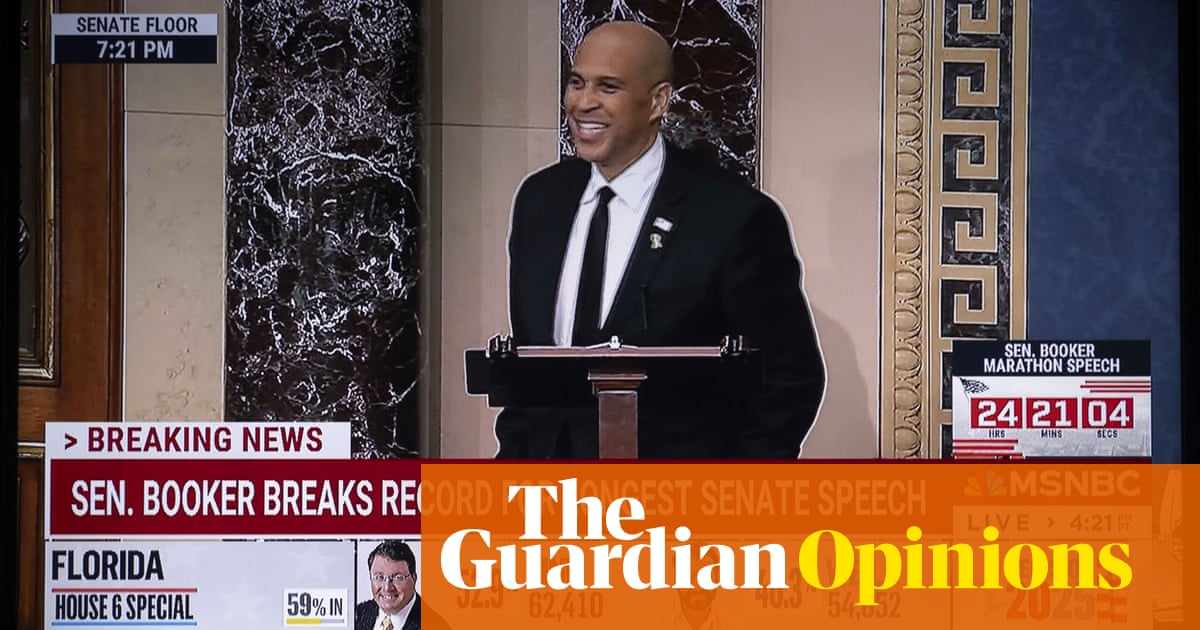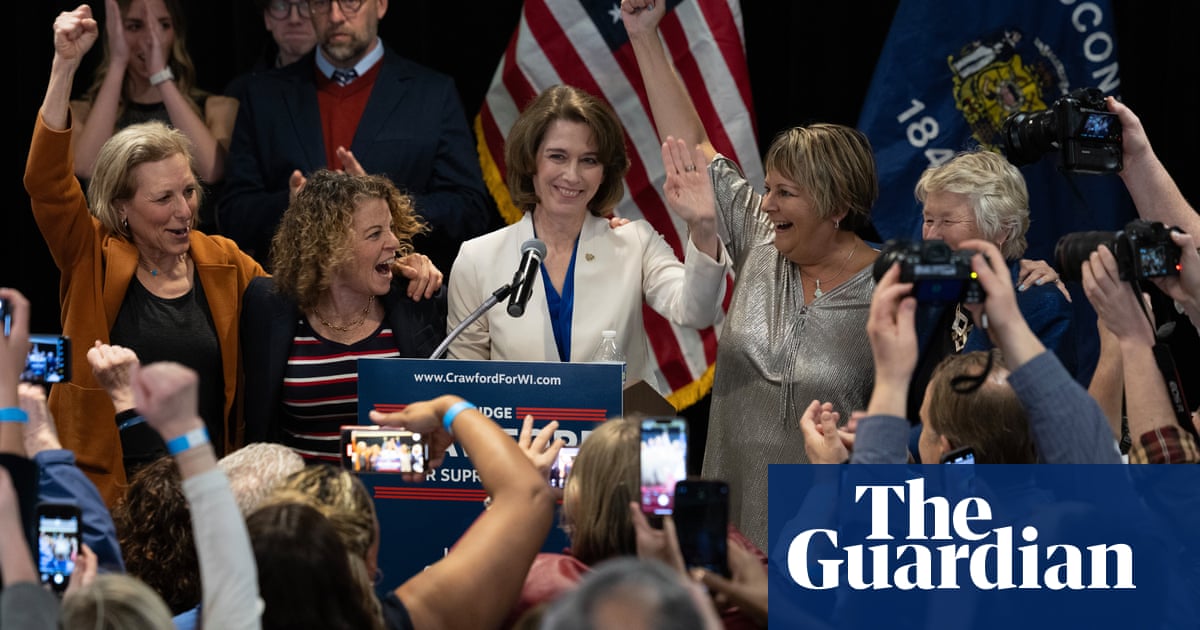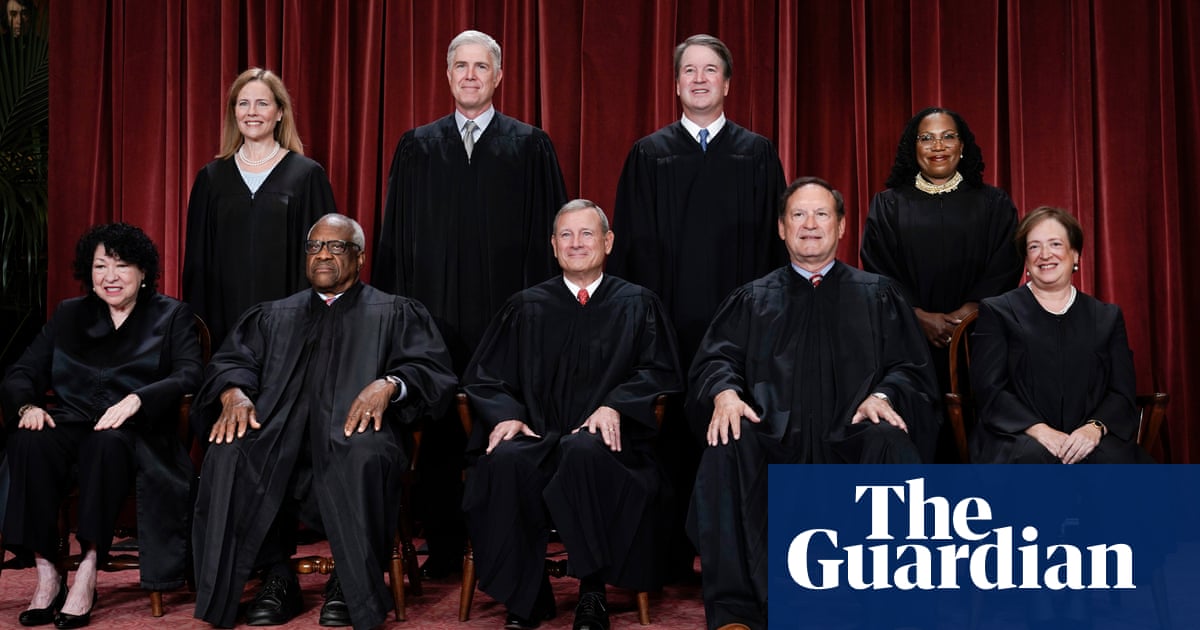Progressives have plenty of bad ideas that should be axed, but populism without an economic promise is a bloodless bleat.
It wasn’t long ago that Democratic party moderates expressed ambivalence toward the working class. In 2016, Chuck Schumer summed up the party’s attitude by predicting that “for every blue-collar Democrat we lose in western Pennsylvania, we will pick up two moderate Republicans in the suburbs of Philadelphia”.
What a difference a decade makes. In a recent report titled Renewing the Democratic Party the thinktank Third Way warns: “For the first time since the mid-20th century, the central fault line of American politics is neither race and ethnicity nor gender but rather class.” The policy shop even organized a meeting of heavy-weight Democratic party leaders to develop a new strategy for how they might win back the working class.
Can moderate Democrats, plotting their path back to power in Loudoun county, Virginia (the richest county in the US) convincingly make a populist pivot?
While Third Way’s advice, collected in a widely circulated memo, has some useful insights, more than anything it demonstrates establishment Democrats’ failure to understand the nature of working-class woes. In fact, the revival of populism, left and right, can be understood as a revolt against the world Third Way helped midwife. After all, they embraced an economic model – defined by free-trade, deindustrialization, mass global migration and stagnant wages – that was responsible for the left’s breakup with the working class in the first place.
Working-class culture clash
Third Way’s first takeaway from the election is that Democrats are culturally disconnected from the working class. And they’re right. They advocate moving away from identity politics, insist that candidates use “plain language”, “avoid jargon”, reject “fringe positions” and eschew “overly moralistic or condescending messaging”. This makes sense. Yet newfound fears of identity politics, or the excessive influence of the foundation-funded nonprofit Left, reflect a certain amnesia. Moreover, turning the ship around is easier said than done.
It’s no secret that sanctimonious political correctness, and preachy “social-justice” rhetoric have served as a major means to sideline progressive critics of the prevailing economic order. In fact, long before Hillary Clinton infamously wondered whether breaking up the big banks would “end racism”, her husband’s campaign architects – paradigmatic Third Way Democrats–pursued the same line of attack against critics of the North American Free Trade Agreement (Nafta). Those who didn’t want jobs shipped to the lowest-wage corners of the globe were labeled “racists”. It’s not a coincidence, then, that the rise of identity politics, and even “wokeness”, happened in tandem with the ascent of globalization as championed by Third Way adherents.
As factories closed and millions of jobs were drained out of the US the economic and social power of the working class fell into a steep decline. By the mid-1990s non-profits and thinktanks replaced labor unions as the major source of political influence on the Left. With unions taking a backseat, politicking within the Democratic party took on a more elite character. Fights over slices of the economic pie shifted from the vertical axis – between labor and big business, between the rich and the poor – to the horizontal, between cross-class “groups,” unfailingly represented by well-staffed professional advocacy organizations.
This all had the convenient effect of rendering blue-collar concerns practically invisible to elite Democrats. While trade, immigration and dissension over cultural issues have long appeared at the top of lists of concerns for non-college educated workers, Democrats wouldn’t listen. Instead they embraced liberal professionals as the vanguard of the New Democrat movement. Welcoming the influence of the Brahmin caste. Meanwhile, liberal cultural institutions (the media, the academy, the arts) increasingly applied downward pressure on blue-collar workers to embrace new values. That is, the values of the elite.
Consider that, for the first half of this decade, there were wall-to-wall injunctions from the largest corporations in retail, tech, and even finance – not to mention virtually all major media conglomerates – to embrace liberal identity politics, “diversity, equity, and inclusion,” and cosmopolitan sexual ethics. Looked at in this light, today’s culture war can best be understood as a working-class revolt against the values of ‘knowledge economy’ elites. It won’t be easy to make peace with the same elite still in charge.
Resentment is rich
Nor is it a coincidence why educational cleavages, in particular, play such a major role in cultural and political conflict today. While they were busying fashioning the “New Economy,” Third Way elites insisted that non-college educated workers refashion themselves to suit it. They implored everyone to go to college and learn to code to compete in the emerging high-tech hyper-global world. They were confident that the short term pain of job losses would be rewarded with future gains. It hasn’t panned out. In terms of income, wealth and even life expectancy, blue-collar workers have found themselves lagging further and further behind their educated white-collar counterparts. Since 2000 wages for non-college educated workers have remained flat or actually fallen. For those with a college degree they have modestly increased. The earnings gap has grown wide.
Meanwhile, none have benefitted from the contemporary economic and political arrangement as much as the wealthy. In inverse proportions have the rich profited alongside working-class decline. In 1990 – before Clinton signed Nafta, before Democrats presided over further deregulation of the financial sector, and before the dot-com boom – there were 66 billionaires in the United States. Just 10 years later – after gobs of factory jobs were off-shored – there were 298. A 350% increase. Today, there are more than 748.
As a result, even Larry Summers (once a preeminent Third Way economist) has identified an “investment dearth” combined with a “savings glut” that has led to economic “secular stagnation”. In layman’s terms: the rich have all the money and they refuse to share. The billionaire hoarding of wealth means investment in the real economy is anemic. They sit like elephants on top of global growth rates. And because workers can’t spend wages they don’t have, effective demand stays flat.
The Third Way left promised that the firesale of public assets, the unshackling of big banks and the introduction of unfettered free-trade would unleash unprecedented growth and a rising standard of living for American workers. It didn’t. Instead, it drove down wages and helped them transform their own party into a haven of the affluent and the educated.
The paradoxes of pragmatic populism
Confronting all this, Third Way now advocates that Democrats embrace a brand of pragmatic populism. They recognize the need to critique “corporate excess and corruption,” they counsel Democrats to avoid “dismissing economic anxieties” and instead acknowledge “real struggles like high prices and stagnant wages”. They even suggest that Democrats fight “for systemic reforms rather than just defending the status quo”.
At the same time, they stress that Democrats are hurt by “reflexively attacking wealthy business leaders”. They warn against “vilifying the rich” and “demonizing” corporations. And insist that Democrats be pragmatic “pro-capitalist” reformers.
They argue that candidates ought to own “the failures of Democratic governance” they don’t count among these, the broad failure of liberal economic policy to improve the lives of most voters. And while the authors of the memo are right to notice that “Democrats lack a cohesive, inspiring economic agenda”, they don’t offer any ideas for economic renewal. There is nothing about trade, manufacturing, the crisis of mass layoffs or the crumbling of American infrastructure. There is no discussion of jobs programs, labor market policies, overtime pay, or cost-of-living raises. The only mention of wages is to suggest that they ought to be “better”. Worse, Third Way’s insistence that candidates avoid blaming the corporations and the rich – the very group responsible for the broad economic and political crisis – presents a conundrum for would-be Democratic populists: how are they meant to make “the economy” a central talking point, if they don’t have anything to talk about?
Blue-collar preferences do seem politically heterodox – progressive on wages and jobs, protectionist on trade, restrictive on immigration, moderate on culture and conservative on the deficit – and it can seem difficult to build a program to suit what seem like conflicting demands. But looked at another way these views add up to a fundamental break with the prevailing economic order. A call to shift society in favor of workers.
Yet Third Way’s economic proposals – summed up by the demand for “middle-class tax cuts”– are a last gasp effort at preserving that order. Until, and unless, progressives can campaign in ways that address the root causes of workers’ cultural, social and economic concerns – that is, until the Left can provide a compelling case for how to exit the global race to the bottom – the result will be a string of narrow majorities and narrow defeats.
Each party taking their turn in office, neither providing a permanent home for the working class.
-
Dustin Guastella is a research associate at the Center for Working Class Politics and the director of operations for Teamsters Local 623.

 German (DE)
German (DE)  English (US)
English (US)  Spanish (ES)
Spanish (ES)  French (FR)
French (FR)  Hindi (IN)
Hindi (IN)  Italian (IT)
Italian (IT)  Russian (RU)
Russian (RU)  1 day ago
1 day ago
























Comments